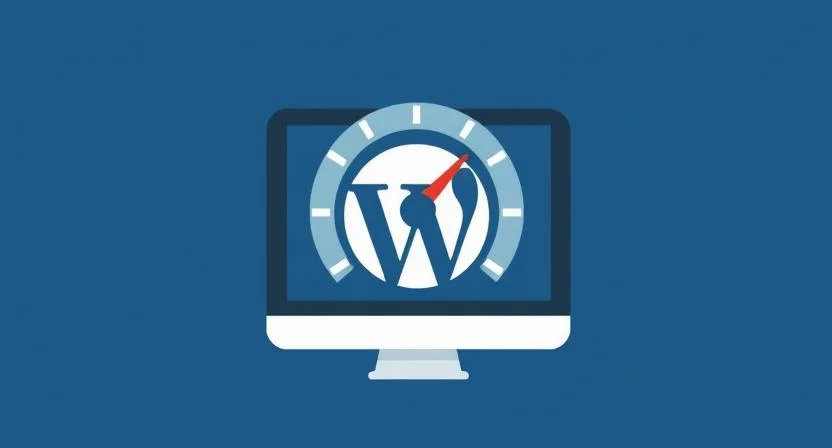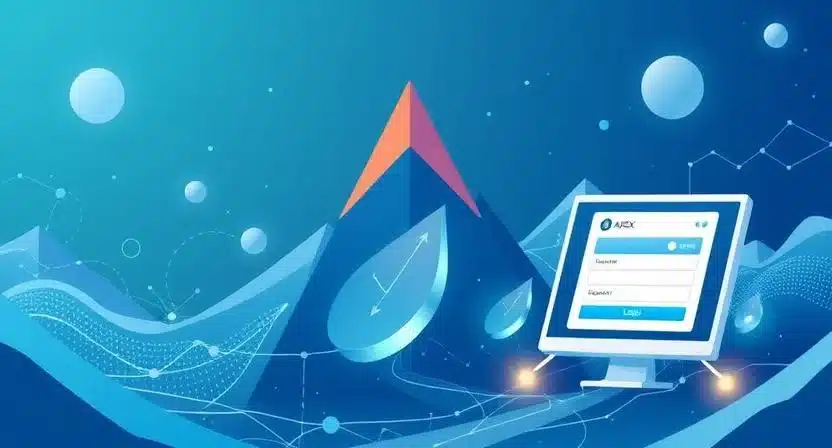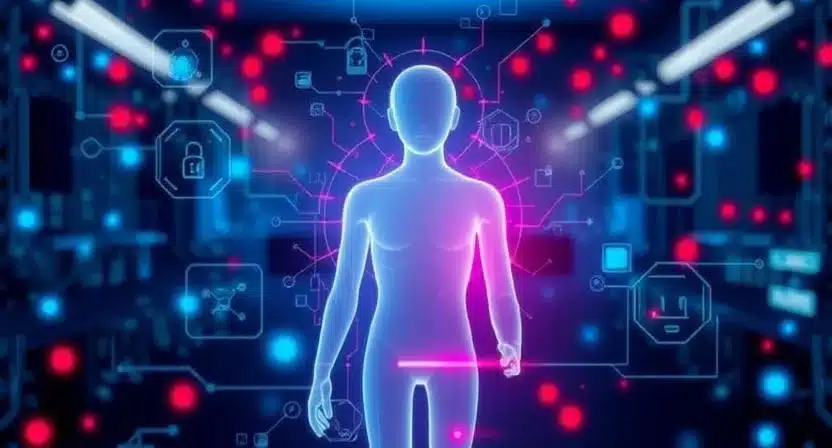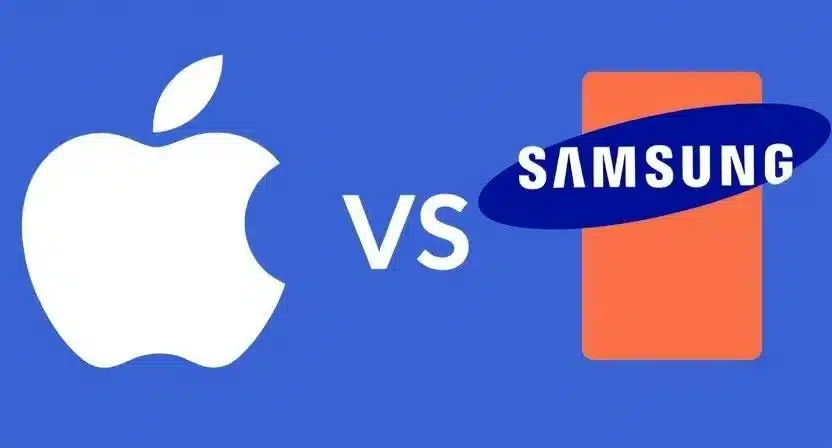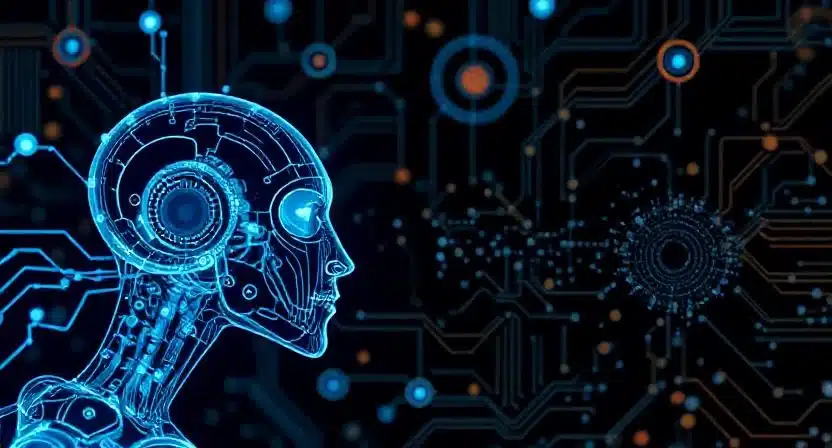How Do AI Agents Work? Definition, examples, and types
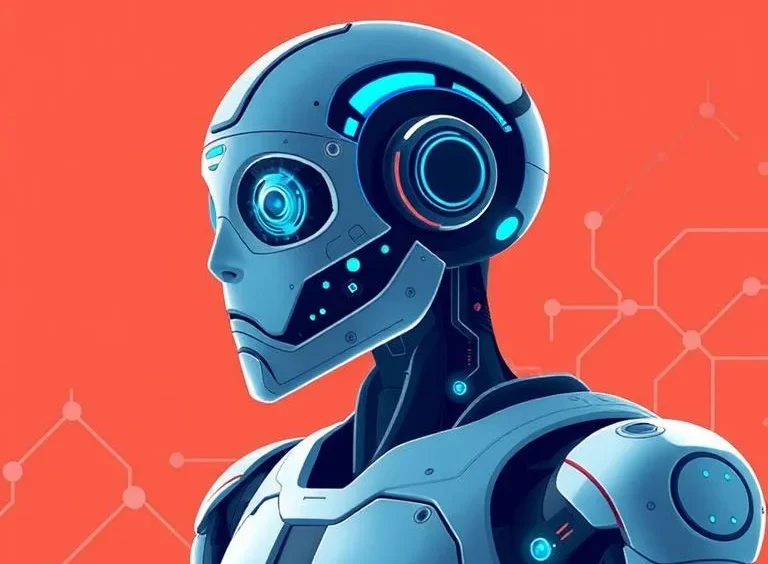
AI Agents Work real-life scenario; Suppose an individual wishes to arrange a vacation online, instead of looking for flights, comparing hotels, and deciding the weather himself. In that case, he commands a virtual assistant, Book me a 5-day trip to Italy for $1,500, including flight, and top sights. Within minutes, that virtual assistant gets flight options, compares the cost of hotels, checks the forecast, and even suggests a restaurant near his stay. This is not just a superlative assistant; this is work done by an AI agent. Simple robots blurt out pre-programmed answers, but AI agents perceive, infer, and act in the interest of clear objectives, much like a human assistant would. From disease diagnosis to customer support, AI agents are revolutionizing the nature of work and daily life behind the scenes.
What is an AI Agent? (Definition & Basics)
In short, an AI agent is a closed system that can perceive its environment, make decisions, and act in a manner that achieves something. They are like computer problem-solvers who don’t just supply information, but they actually do something about it. How AI Agents Differ from Other AI Systems AI agents vs. Chatbots/assistants: A chatbot delivers pre-stored replies. A personal assistant (like Siri or Alexa) carries out our commands. An AI agent can plan, select tools, and take action on our behalf, however. AI agents vs RPA (Robotic Process Automation): RPA performs actions repetitively but lacks intelligence. AI agents bring reasoning, flexibility, and goal-directed behavior. Why the Term “Agentic AI” Is Important. Recently, you’ll hear the phrase “agentic AI”—this emphasizes AI that’s not just reactive but proactive, meaning it can make choices, set subtasks, and even collaborate with other agents. In plain words, while AI responds to your queries, an AI agent can get the job done for you.
How Do AI Agents Work? (Core Mechanics)
To truly get it, consider how a human intern works on an assignment. You tell them to create a report. They: Listen to your command. Find data from various sources. Determine what’s important. Build the report step by step. Learn from your feedback for the next assignment. AI agents do the same, only quicker and with no coffee breaks.
Steps:
- Step 1: Goal Initialization. An AI agent begins with a goal. This might be: A user request (e.g., “Book a flight to New York”). A system instruction (e.g., “Update inventory daily at 8 PM”). While assistants just reply, agents can segment a general goal into sub-tasks without any human assistance.
- Step 2: Perception of Environment Agents perceive the environment from sensors, APIs, or data streams. In a robot vacuum, obstacles are sensed by sensors. For a virtual AI agent, “sensors” might be a business database or web search.
- Step 3: Reasoning & Planning, this is where agents break with traditional bots. They employ a reason engine or LLM (large language model) to reason about the situation. They infer the best sequence of actions. Example: book trip → search flights → check prices → check weather → book. This reasoning may include sophisticated techniques such as: Retrieval-Augmented Generation (RAG): looking up facts from external knowledge bases. Vector databases: long-term memory storing and retrieval. Workflow orchestration: dividing goals into steps and tracking progress.
- Step 4: Action Execution Having made plans, the agent takes action: Calls APIs (for booking flight). Sends emails (to obtain confirmation details). Triggers other software (such as HR systems or chat platforms). This is where autonomy gets real—the agent is not waiting for every instruction from you.
- Step 5: Feedback, Learning & Adaptation The best AI agents don’t merely act. They learn from outcomes: Was the reservation not accepted? Use a different airline. Did a user reject a draft? Improve the next one. This forms a loop: Perceive → Reason → Act → Learn. The agent becomes smarter with experience.
By completing these steps, AI agents behave less as a static tool and more as an active collaborator who has the ability to learn to navigate new situations.
AI Agent Architecture (Deep Dive)
To conceptualize what is contained within an AI agent, imagine the human brain with the toolkit added. As we utilize memory, senses, and choice-making to make something happen in the world, an AI agent similarly possesses an internal design such that it can act smartly. Central Elements of an AI Agent Sensors (Input Layer): these enable the agent to “see” or “feel” the world around it.
Examples:
- Example 1: An autonomous vehicle employs cameras, radar, and lidar; a digital AI agent may use APIs, web scraping, or databases. Knowledge Base (Memory) Stores facts, history, and experience. Either short-term memory (current context) or long-term memory (previous interactions). Powered by vector databases and occasionally Retrieval-Augmented Generation (RAG) to query information optimally. Reasoning & Decision-Making Engine is the agent’s brain. Employs rules, algorithms, or large language models (LLMs) to determine the next best action.
- Example 2: Selecting among several flight choices based on price and schedule. Planner (Workflow Orchestration) breaks a big goal down into little work pieces that can be processed. Makes the order of actions rational and effective. Effectors (Output Layer) Carry out the selected actions. May involve moving a robot arm, sending an acceptance email, or depositing into a database. Advanced Features in Modern AI Agents Tool Use & API Integration Agents may interact with several systems: payment processors, CRMs, HR suites, etc.
- Example 3: One information-gathering agent from Slack, Jira, and Service Now all at once. Human-in-the-Loop, although agents may operate independently, most are implemented to wait for human approval or instruction on important work (e.g., approving a financial transaction). It balances autonomy and accountability. Guardrails & Observability to help ensure the dependability of agents, “guardrails” are added by coders to avoid errors (e.g., not buying a plane ticket too costly). Observability tools watch what the agent is doing, so there is openness.
Emerging Standards & Frameworks Model Context Protocol (MCP):
A model for frictionless interoperability of agents between tools.
- Lang Chain & Autogenic: Tested frameworks for developing LLM-based agents.
- Cloud Platforms: Google Vertex AI, AWS Bedrock, and Azure AI provide infrastructure on which to execute agents at scale. Why Architecture Matters Poor architecture for an AI agent is like a tool-less worker with no memory—nothing will get done.
- Good architecture enables agents to: Support sophisticated tasks. Scale across sectors. Evolve and tailor over time. Be consistent and reliable.
Types of AI Agents (with Examples)
Not all artificial intelligence agents are equal. While some are reactive and simple, others can act ahead, make sophisticated decisions, and even cooperate with humans or other agents. There are several kinds of agents. Let’s classify them into five broad classes:
- Simple Reflex Agents: How they work: They work only in terms of the current moment without consideration of history or the implications of the future. They work with a set of if-then rules. Real-world example: An intelligent thermostat that turns on the heating system when the temperature is less than 20°C. Use case: Simple automation where conditions are known.
- Model-Based Reflex Agents: How they function: They have a world model that allows them to acquire more knowledge. They don’t merely respond—they utilize context. Actual-world example: A cleaning vacuum cleaner that learns your home’s map to clean effectively. Use case: Warehouse automation, home robots.
- Goal-Based Agents: How they function: Such agents don’t respond—rather, they plan a list of operations with precise goals. Real-world example: A trip booking agent that books a flight, hotel stay, and itinerary. Use case: Virtual assistants, business process automation.
- Utility-Based Agents: How they work: These agents weigh many potential outcomes and select the one that brings the most “happiness” or utility. Real-life example: An investment trading agent that weighs risk and selects the option with the highest profit-to-risk ratio. Use case: Finance, supply chain optimization, healthcare decision support.
- Learning Agents: How they work: The most sophisticated of all, these agents learn from experience and get progressively better. Real-life example: Netflix’s video recommendation system, which adjusts according to your viewing history.
Use case: Adaptive marketing, medical diagnosis, adaptive tutoring. Comparison Table: Types of AI Agents Type of Agent\intelligence Level\example\best For Simple Reflex\low\ Smart thermostat\rule-based tasks Model-Based Reflex\ Medium\ Robot vacuum\Robotics, automation Goal-Based\ High\t\ Travel planner agent\ Multi-step tasks Utility-Based\ High\ Stock trading agent\ Optimization & decision-making Learning Agents Very High Netflix suggestions Adaptive, personalized activities.
Real-World Applications of AI Agents
AI agents are not only theory—they already exist in our everyday life and business processes. From smart home devices to sophisticated enterprise solutions, they’re in the background reshaping how we work and live. Let’s examine some real-world applications in industries.
- Virtual Personal Assistants: (Use in Everyday Life) Examples: Siri, Alexa, Google Assistant. How they work: Respond to voice commands, provide answers to questions, control smart home devices, and send reminders. Impact: Save time, become more accessible, and deliver hands-free convenience.
- Customer Support Agents: Examples: Website chatbots, MoveWorks AI for business customer support. How they work: Process FAQs, resolve issues, and route complex issues to humans. Impact: Reduce waiting times, enhance 24/7 support, and reduce business costs.
- Healthcare Agents: Examples: Babylon Health, IBM Watson Health. How they operate: Analyze symptoms; suggest treatments, aid doctors in diagnosis. Impact: Enhance patient care, make diagnoses faster, and provide care in rural communities.
- Financial Services Agents: Examples: AI bots for stock trading, anti-fraud software. How they work: Track transactions, identify suspicious patterns, or carry out trades in real-time. Impact: Prevent fraud, maximize investments, stay compliant.
- E-commerce & Personalization Agents: Examples: Amazon recommendation engine, Shopify AI platforms. How they work: Look at web browsing and purchase history to suggest. Algorithms. Effect: Maximize sales, enhance user experience, and enhance customer loyalty.
- Autonomous Agents: in Robotics Examples: Tesla Autopilot, robots in Amazon warehouses that stock. How they work: Sense environments, operate autonomously, and assist in tasks such as delivery or sorting. Effect: Automate, save labor costs, and increase safety in hazardous environments.
- Enterprise Workflow Agents: Examples: AI agents built into Slack, Jira, or Service Now. How they work: Enable routine business tasks such as ticket closure, scheduling, or data entry. Effect: Release employees for more value-added activities, and raise productivity. Why These Examples Matter. These practical implementations illustrate that AI agents are not science fiction dreams. They’re already in sectors, enhancing speed, efficiency, and personalization. Notably, they show the way agents balance autonomy with human supervision—the primary reason why companies use them.
Advantages and Disadvantages of AI Agents
As with any great technology, AI agents have their limitations, as well as benefits. Knowing these enables users and companies to create realistic expectations.
- Key Benefits of AI Agents: Automation of Repetitive Tasks. Agents carry out work like data entry, ticket closings, or scheduling without manually stepping in. Example: HR agents sorting resumes before they ever reach a human recruiter.
- 24/7 Support Agents don’t sleep like humans. Customer support representatives can respond to questions around the clock, enhancing world reach. Quicker Decision-Making Through processing huge amounts of data in real time, representatives enable businesses to make knowledgeable decisions rapidly. Example: Automated fraud detection software marking suspicious transactions in seconds.
- Cost-Efficiency frees businesses from the need for large support groups, unnecessary personnel, and business overhead. Long-term cost savings for enterprises. Scalability Representatives are easily scalable to handle thousands of tasks simultaneously. Example: Holiday shopping season, online stores employing representatives.
- Personalization: Representatives come to know users’ preferences. Example: Netflix recommendations, the more you use them, the better they become.
- Limitations of AI Agents: Lack of Real Understanding. Sophisticated agents do not comprehend like humans do. They work based on patterns in data. This can cause mistakes in emotional contexts.
- Dependence on Quality of Data: “Garbage in, garbage out.” Agent performance degrades when training data is bad or skewed.
- High Development Expenses: (At First), although they are inexpensive in the long run, agents for enterprises take money, time, and expertise to develop.
- Ethical & Trust Concerns: Too much dependency on agents for sensitive work (e.g., medical or legal counsel) is bad from a responsibility perspective.
- Restricted Imaginativeness: Agents are great at rule-following and optimization, but terrible at innovative thinking beyond their domain.
- Human supervision is needed in life-critical areas (medicine, finance, law), a human-in-the-loop is required to prevent expensive errors.
- Balanced Perspective: Consider AI agents as super-skilled helpers—great at speed, precision, and repetition, but possibly not replacements for human judgment, intuition, or empathy. The optimal outcome is achieved by having agents and humans work together.
The Future of AI Agents
AI agents are now increasingly transforming in an amazing manner, from simply automating tasks to more intelligent, flexible, and collaborative systems. The future is not just about efficiency, but radically new styles of working, learning, and living.
- Greater Autonomy Agents will increasingly work autonomously without continuous human oversight. Example: Autonomous cars coordinating with intelligent city traffic management systems. Effect: Humans can outsource complicated workflows, not only infinitesimal tasks.
- Multi-Agent Collaboration Rather than lone agents, next-generation systems will have a cloud of collaborative agents. Example: Supply chain logistics agents running supply chains in real-time. Impact: Global operations accelerated with greater effectiveness and reduced errors.
Collaboration with Humans:
- Future agents will be developed as collaborators, not replacements.
- Example: Doctors collaborating with diagnostic agents that make suggestions.
- Impact: Augments human decision-making with accountability preserved.
Emotional Intelligence in Agents:
- Research is moving toward agents that can understand tone, mood, and emotional context.
- Example: AI therapists or wellness coaches who respond compassionately.
- Impact: More natural dialogue, especially in healthcare and education.
Industry-Specific Agents:
- Industry-specific agents will dominate industries.
- Healthcare: AI operating room assistants.
- Education: Personalized tutors per child.
- Finance: Compliance monitors in real time. Impact: Expertise in scale with specialization.
Integration with Emerging Tech:
- AI + IoT: Smarter homes and cities governed by networked agents.
- AI + Blockchain: Secure, open financial or legal transactions.
- AI + AR/VR: Interactive education with agents as virtual tutors.
Ethical & Regulatory Evolution:
Regulations, guidelines, and laws will evolve as AI agents become more involved. Key areas of focus:
- Data privacy
- Accountability in the event of errors
- Fairness and avoidance of discrimination
- Effect: Generates trust and facilitates safe adoption worldwide.
Everyday Life Transformation:
- Your AI home manager is organizing groceries, bills, and energy efficiency.
- Your AI travel agent is organizing seamless global travel.
- Your artificial intelligence work buddy drafts reports, creates schedules, and negotiates contracts.
- The line between science fiction and real life is diminishing at a rapid pace.
Conclusion & Key Takeaways
Imagine if a person is walking into his office tomorrow and finding that all his repetitive tasks—email sorting, meeting scheduling, report drafting—have already been done by his AI assistant. Instead of drowning in routine work, he is free to focus on strategy, creativity, and decision-making. This is the real promise of AI agents: not to replace us, but to empower us.
Key Takeaways
- Definition & Purpose: AI agents are computer programs designed to perceive, reason, and act autonomously towards some goals.
- Types: From simple reactive agents to advanced learning-based and hybrid varieties, each with unique functions.
- How They Work: Agents operate by applying perception, reasoning, and action loops energized by algorithms and up-to-date facts.
- Applications: Found in medicine, finance, customer support, learning, robotics, and everyday life.
- Benefits: Efficiency, scalability, customization, and cost savings.
- Limitations: Data dependence, absence of human intuition, ethics problems, and constant surveillance.
- Future: Intelligent, emotionally intelligent, collaborative agents that are embedded in IoT, blockchain, and AR/VR.
The Human + AI Partnership
The future is not humans versus machines—it’s both humans and machines. AI agents excel in handling speed, scale, and repetition, but humans can provide empathy, creativity, and judgment. Together, they can build a partnership to transform industries and daily life.



























































































